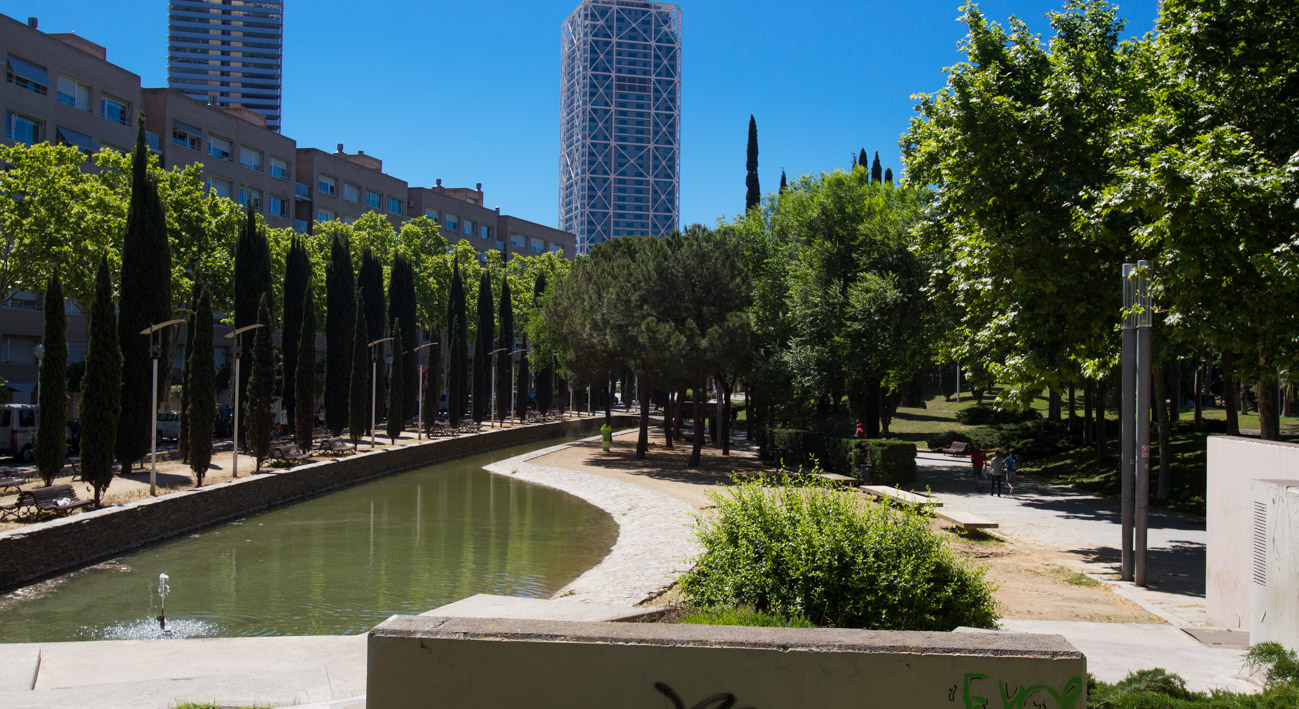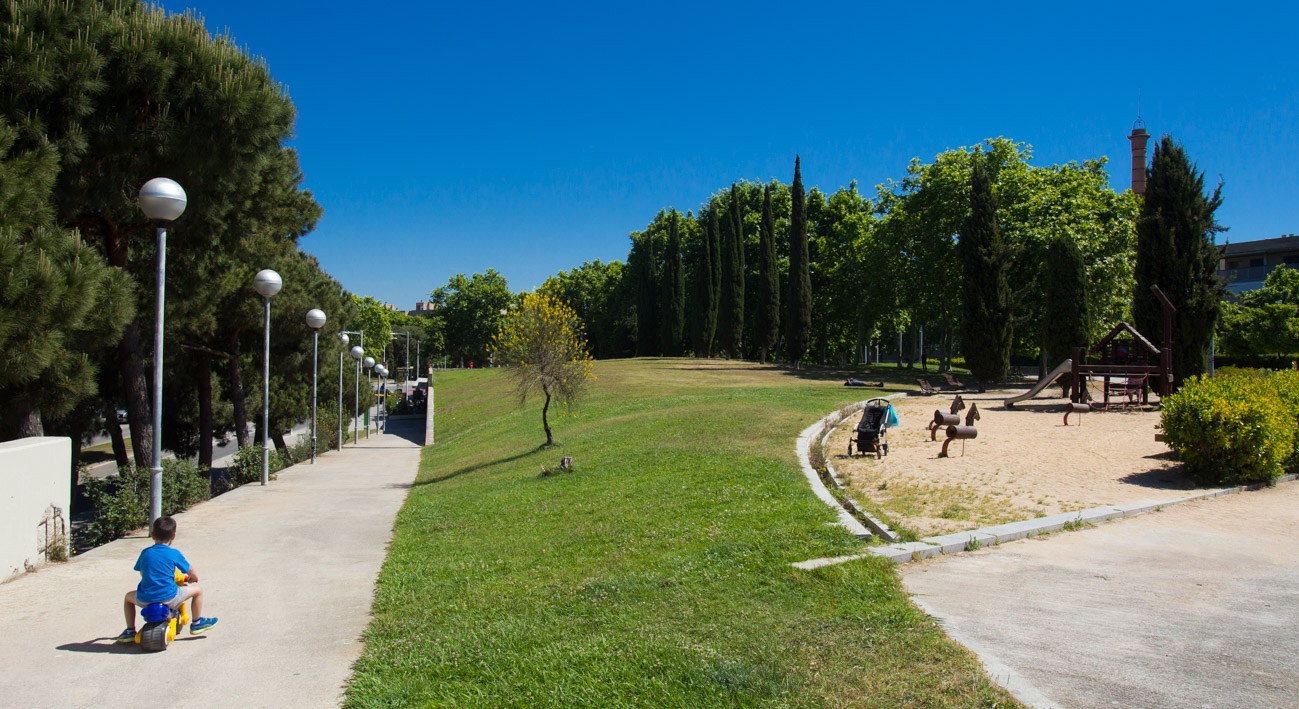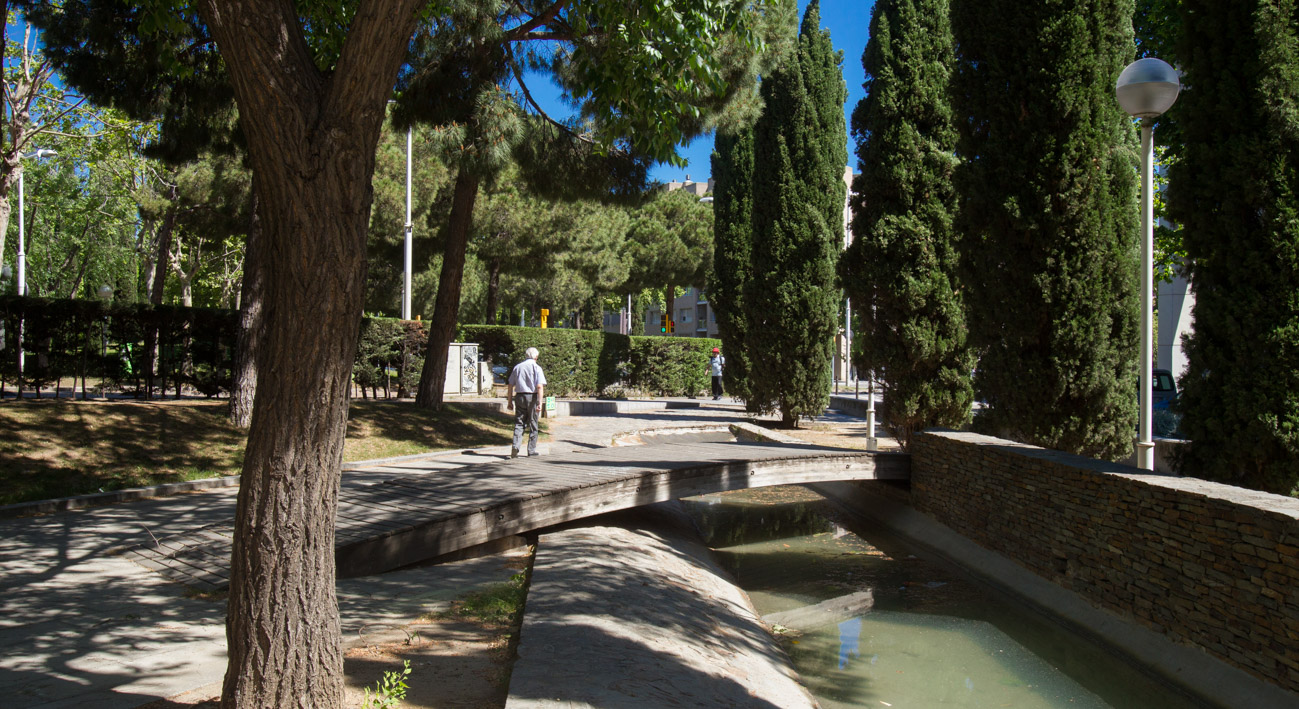Parc de Carles I became a sort of Olympic Village gateway, towards which it is aligned. Particularly notable are its lines of tall cypresses and plane trees and a long water channel. It is part of the large, coastal park created to open the city up to the sea for the Olympic Games in 1992.

History
Parc de Carles I is one of the “coastal parks”, which also include the Port Olímpic, Nova Icària, Poblenou and Cascades parks. Five large green spaces that were built on Poblenou’s old industrial land at the start of the 1990s, as part of the coastal facade’s redvelopment for the 1992 Olympic Games.

Biodiversity
As regards the plane trees, note in particular the ones branching out from their stumps, a truly curious sight for an urban setting, which you can find in C/ Marina, C/ Moscou and C/ Doctor Trueta. They come from an old plantation or grove intended for agro-forestry. Note that it is relatively common not to pull out the trees after the first felling so new trees can grow out again from the stump.
There are three large ombus (Phytolaca dioica) near the final section of the water channel, one of which shows numerous roots. There are Seville orange trees (Citrus aurantium) and magnolias (Magnolia grandiflora) in the park’s paved areas.
Also noteworthy are the conifers there, as represented by Aleppo pines (Pinus halepensis), stone pines (Pinus pinea) and Himalayan cedars (Cedrus deodara). There are also date and Canary Island date palms (Phoenix dactylifera and Phoenix canariensis) and fan palms (Washingtonia robusta). Other species found there include Siberian elms (Ulmus pumila), weeping willows (Salix babylonica), white mulberries (Morus alba) and olive trees (Olea europaea).

Art and Architecture
The sculpture, a bronze work six and a half metres high by Eduardo Úrculo called El Cul (The Bottom), was dedicated to Santiago Roldán, the chair of the Olympic Holding company from 1989 to 1993. Set near the park’s Himalayan cedars, it consists of long, chubby legs supporting two perfectly round buttocks.

Landscaping and Design
The park climbs over stone walls at the junction between C/ Wellington and C/ Marina, and continues past França station. A long row of cypresses marks the path between the various parts of the park. A large grass area, together with the canal’s water falling into a waterfall to follow its course along the street-level section, mark the end of this broad, raised area of the park.
Another part of the park has rest areas with nooks and crannies marked off by hedges, as well as two points that let you cross from one side of the canal to the other before it ends its course. Other elements shaping the character and landscape of this green space are the rows of trees and gentle hills covered extensively in grass.
Another area with its own personality is at the back, on the other side of C/ Doctor Trueta, a kind of large square, almost completely asphalted, with a couple of plots of lawn, trees planted in a hollow and a children’s play area. A final note for dog owners: this park has one of the biggest dog recreation areas in Barcelona.
-
- Phone number
- Tel.: 010
-
- Titularity
- Public center
- Address:
- Av Icària, 121
- Districte:
- Sant Martí
- Neighborhood:
- la Vila Olímpica del Poblenou
- City:
- Barcelona
- Sections of this equipment
- Àrea de joc infantil
- Àrea d'esbarjo per a gossos
- Taules de ping-pong
- Àrea de joc infantil
- Wc públic






